
Pollok House, formerly the family seat of the Stirling-Maxwell family, is located at Pollok Country Park in Glasgow, Scotland.
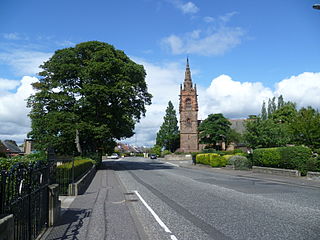
Craiglockhart is a suburb in the south west of Edinburgh, Scotland, lying between Colinton to the south, Morningside to the east Merchiston to the north east, and Longstone and Kingsknowe to the west. The Water of Leith is also to the west.

A dovecote or dovecot, doocot (Scots) or columbarium is a structure intended to house pigeons or doves. Dovecotes may be free-standing structures in a variety of shapes, or built into the end of a house or barn. They generally contain pigeonholes for the birds to nest. Pigeons and doves were an important food source historically in the Middle East and Europe and were kept for their eggs and dung.

Shieldhall is a district in the Scottish city of Glasgow. It is situated directly south of the River Clyde and is part of the wider Govan area.
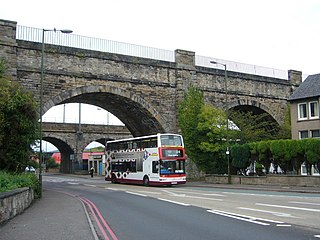
Longstone is a suburb of Edinburgh in Scotland. The area is primarily residential in nature, although the area includes several small shops, eateries and supermarkets, as well as one of the main bus depots for the city's buses. The population of Longstone was 4,678 in 2019.

Newark Castle is a well-preserved castle sited on the south shore of the estuary of the River Clyde in Port Glasgow, Inverclyde, Scotland, where the firth gradually narrows from the Firth of Clyde and navigation upriver is made difficult by shifting sandbanks. For centuries this location was used to offload seagoing ships, and led to the growth of Port Glasgow close to the castle on either side and to the south. When dredging techniques made the Clyde navigable as far as Glasgow the port became a shipbuilding centre, and the castle was surrounded by shipyards. Ferguson Shipbuilders, the last shipyard on the lower Clyde, stands close to the west of the castle, but the shipyards to the east were removed around the 1980s and new landscaped areas formed to the east of Newark Castle, opening up scenic views of the castle and across the Clyde from a new bypass road.

Linlithgow is a town in West Lothian, Scotland. It was historically West Lothian's county town, reflected in the county's historical name of Linlithgowshire. An ancient town, it lies in the Central Belt on an historic route between Edinburgh and Falkirk beside Linlithgow Loch. The town is situated approximately 20 miles west of Edinburgh.

The lands of Daldowie in Glasgow, Scotland lie astride the River Clyde on the south and the North Calder Water to the east, and stretch to the present area of Broomhouse in the north.
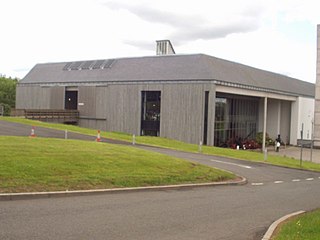
The National Museum of Rural Life, previously known as the Museum of Scottish Country Life, is based at Wester Kittochside farm, lying between East Kilbride in South Lanarkshire and Carmunnock in Glasgow. It is run by National Museums Scotland.
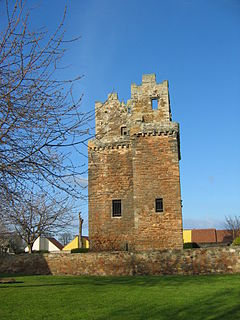
Preston Tower is a ruined L-plan keep in the ancient Scottish village of Prestonpans. It is situated within a few metres of two other historic houses, Hamilton House and Northfield House.
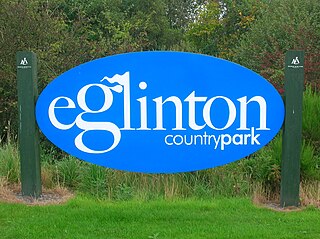
Eglinton Country Park is located on the grounds of the old Eglinton Castle estate in Kilwinning, North Ayrshire, Scotland. Eglinton Park is situated in the parish of Kilwinning, part of the former district of Cunninghame, and covers an area of 400 ha. The central iconic feature of the country park is the ruined Eglinton Castle, once home to the Eglinton family and later the Montgomeries, Earls of Eglinton and chiefs of the Clan Montgomery. Eglinton Country Park is managed and maintained by North Ayrshire Council and its Ranger Service.

Rendall is a parish on Mainland, Orkney, Scotland. It is in the north west of the island and lies east of the parishes of Birsay and Evie and north east of Harray. The island of Gairsay is also in the parish.
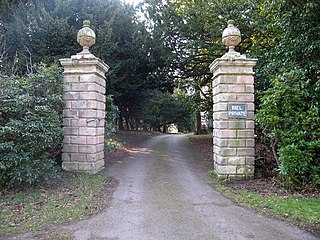
Biel is a village in East Lothian, Scotland, UK, to the south of Dunbar, off the B6370 road. It is situated on the Biel Estate, close to Biel House.

Phantassie is an agricultural hamlet near East Linton, East Lothian, Scotland. It is close to the River Tyne, Preston Mill, and Prestonkirk Parish Church.

Preston Mill is a watermill on the River Tyne at the eastern edge of East Linton on the B1407 Preston Road, in East Lothian, Scotland, UK. It is situated close to Prestonkirk Parish Church, the Smeaton Hepburn Estate, Smeaton Lake, and Phantassie Doocot. It is a Category A listed building.
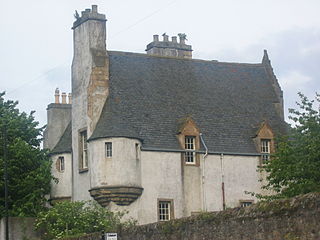
Northfield House is a seventeenth-century historic house at Preston, East Lothian, Scotland, UK. It is situated very close to Hamilton House and Preston Tower, and one mile east to Prestongrange House and the Royal Musselburgh Golf Club. It is a Category A listed building.

Bowhill House is a historic house near Bowhill at Selkirk in the Scottish Borders area of Scotland. It is a member of the Historic Houses Association, and is one of the homes of the Duke of Buccleuch. The house is protected as a Category A listed building, and the grounds are listed on the Inventory of Gardens and Designed Landscapes in Scotland.

Cringletie is a Scottish Baronial house by the Eddleston Water, around 3 kilometres (1.9 mi) south of Eddleston in the Scottish Borders area of Scotland, in the former Peeblesshire. Designed by David Bryce and built in 1861, the house is a Category B listed building. Since 1971 it has been operated as a country house hotel.

Castlemilk House was a country house located in what is now the Castlemilk district of Glasgow, Scotland. The house was the ancestral home of the Stirling-Stuart family and was built around the 15th-century Cassiltoun Tower during the 18th and 19th centuries. The house and Castlemilk Estate were purchased by Glasgow Corporation in 1938, with the house serving as a children's home until it was closed in 1969 and demolished that year.

The Clydebridge Steelworks, also known as Clydebridge Works, is a steel works in South Lanarkshire, Scotland.





















